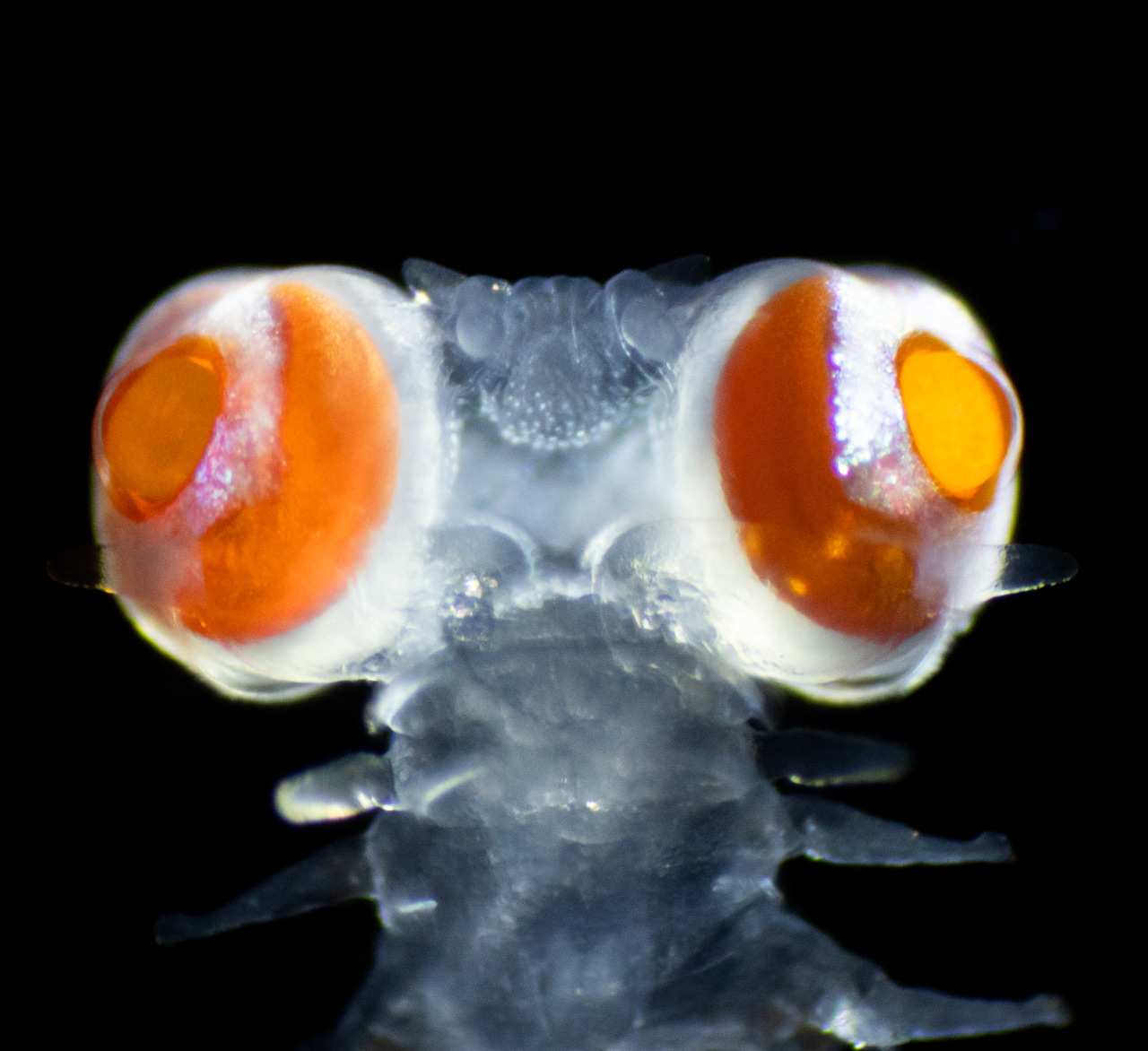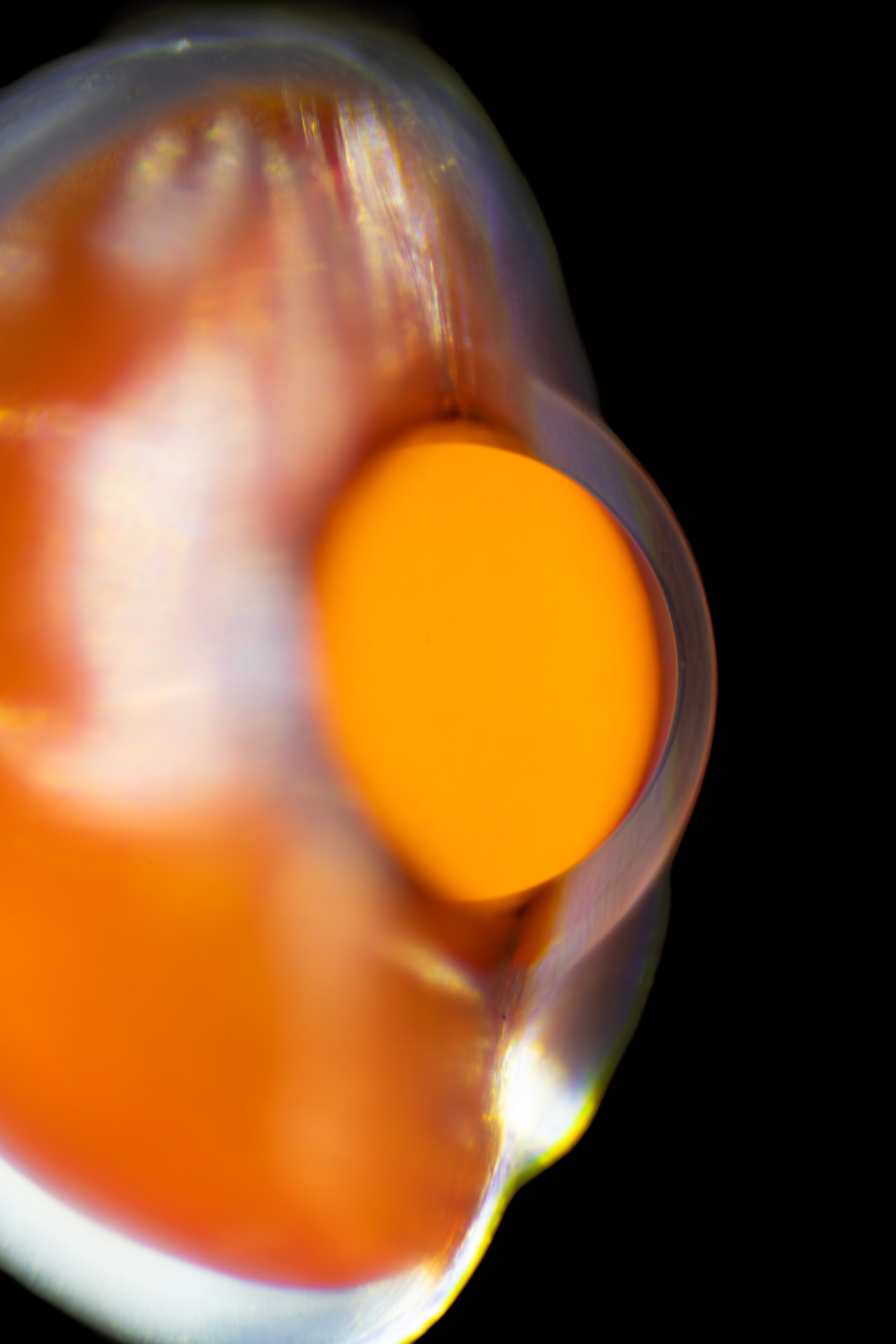
UV light as a secret language
The bristle worm Vanadis has - relatively speaking - eyes the size of millstones. But why? It actually lives in complete darkness.

The bristle worm Vanadis has eyes the size of millstones. At least in relative terms. If our eyes were proportionally as big as those of the worm from the Mediterranean, they would weigh around 100 kilograms. The animal's eyes are around twenty times heavier than the rest of its head and look grotesquely out of place on the tiny sea creature.
Vanadis bristleworms are found around the Italian island of Ponza, west of Naples. Like some of the summer guests on the island, the worms are nocturnal. So what do these animals do with their peepers when it's dark?
The neurobiologist and marine biologist Anders Garm couldn't let go of this question. Together with Michael Bok from Lund University, he set out to unravel the mystery. “Our aim was to answer the question of whether large eyes give the worm good vision,” says Michael Bok. The two scientists were able to show that Vanadis' eyesight is excellent. They found that the worm can see the smallest objects and track their movements.

Such abilities are normally reserved for vertebrates. Along with insects, spiders or octopuses and squid. This is the first time that such good vision has been demonstrated beyond these groups. “Our results show that the worm has excellent vision despite being a simple organism with a tiny brain,” says Garm. “This makes the eyes unique in the animal kingdom,” Garm continues. Garm's research focuses on understanding how simple nervous systems perform very complex functions - which is the case here.
The researchers are now trying to find out what caused the worm to develop such good eyesight. The worms are transparent, except for their eyes, which register light. So they cannot be transparent. This means that the worms have made an evolutionary compromise. Since becoming visible through the eyes is associated with disadvantages for Vanadis, the evolutionary benefits of its eyes must outweigh the consequences.
“No one has ever seen the worm during the day. So we don't know where it hides. So we can't rule out the possibility that it also uses its eyes during the day. What we do know is that foraging and mating take place at night. So it is likely that the eyes are important at this time,” says Anders Garm.
One explanation could be that these worms see different wavelengths of light than humans. Their vision is focused on ultraviolet light (UV), which is invisible to the human eye. According to Garm, this could indicate that their eyes are used to detect bioluminescent signals in the ocean at night.

“We believe that the worms themselves are bioluminescent and communicate via light. If you use visible light as bioluminescence, you run the risk of attracting predators. However, if the worm uses UV light, it remains invisible to other animals. Our guess is therefore that they have evolved a keen UV vision and use a secret language related to mating,” says Garm. “It could also be that they are on the lookout for UV-bioluminescent prey.”
Anders Garm and his colleagues are now collaborating with robotics researchers from the Maersk Mc-Kinney Møller Institute at the University of Southern Denmark (SDU), who are taking technological inspiration from biology. Together with the robotics experts, they want to understand how animals with such simple brains process all the information they gather with such large eyes. “This suggests that there are intelligent ways of processing information in their nervous system. If we capture these mechanisms mathematically, they could be integrated into computer chips and used to control robots,” hopes Ander Garm.
Original publication:
Michael J. Bok, Armando Macali, Anders Garm
High-resolution vision in pelagic polychaetes
Current Biology
VOLUME 34, ISSUE 7, PR269-R270, APRIL 08, 2024
DOI:https://doi.org/10.1016/j.cub.2024.02.055












